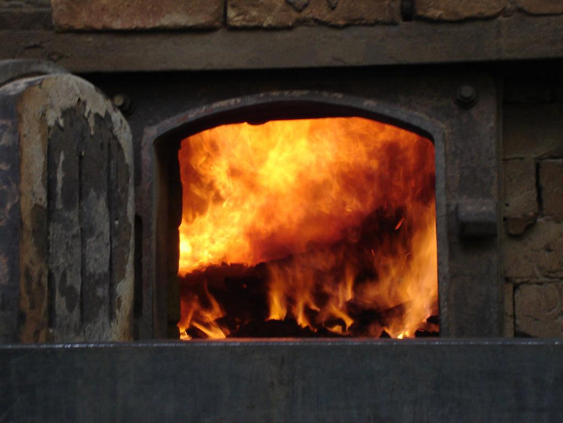You may not think much about your furnace as works throughout the winter to keep you comfortable. But that big hulking unit in your basement has a diverse history, one that goes back centuries. You may have the most modern, bells-and-whistles, energy-efficient model on the market today. Have you ever thought about the history that brought the concept to us in the first place? Let’s take a journey back in time.
Earliest Forms of Central Heating
Fire was an important discovery. People relied on its powers for a very long time before the idea of a more efficient heating system came about. The Romans came up with the first attempt at a central heating unit. They invented a hypocaust. This under-floor heating system used the heat from a fire in one corner of a basement. The heat then went through the exhaust vented through flues in the walls up through the chimneys. It was deal for use in stone or brick homes — not wooden ones, according to Made How. This system posed a fire hazard, yes, but it also posed a risk for suffocation.
Coal and Wood
Today’s furnaces create heat by burning fuel, like oil, but early furnaces used wood. Once the 17th century hit, coal became the fuel of choice. The problem with coal and wood burning furnaces was that they needed a lot of attention. Maintenance helped to keep them going. In order for everyone to feel comfortable in the colder months, it took time and effort to feed the furnace. This often had to happen between three and five times a day. Not only that, the cleanup was a chore. You would often have to sweep up the ashes and remove them.
Modern Times
This is the way home heating proceeded for most people until the 1940s when gas furnaces took over. Then, in the 1970s when the energy crisis was in full swing, gas was in demand but prices were skyrocketing. This was no longer an affordable fuel choice for many American homeowners. As a result, electric furnaces started becoming common. Later, the price of electricity shot up and gas prices went down. The switch went once again back to gas furnaces as the most popular form. Today’s furnaces use stainless or aluminized steel, aluminum, brass, copper, and fiberglass. Each material has a different purpose.
- Heat exchanger: stainless steel for corrosion resistance
- Frame, blowers and burners: aluminized steel
- Valves: brass
- Electrical wiring: copper
- Insulation of the cabinet: fiberglass
Modern furnaces are much more energy-efficient than those of the past. Today’s models operate at about 90% efficiency. This means that most of the heat from the furnace stays in the home to keep people comfortable. Only 10% is escaping. Heat loss can occur through anything. Gaps in windows and doors, leaky ducts, and inefficient piping are the main causes, says Energy.gov.
Contact Us
Want to learn more about how we can install, repair or maintain your home heating and cooling system? Contact us at 847-905-1608. We are available 24 hours a day, seven days a week for your convenience. Call to schedule your appointment today. Our technicians are standing by to help.

